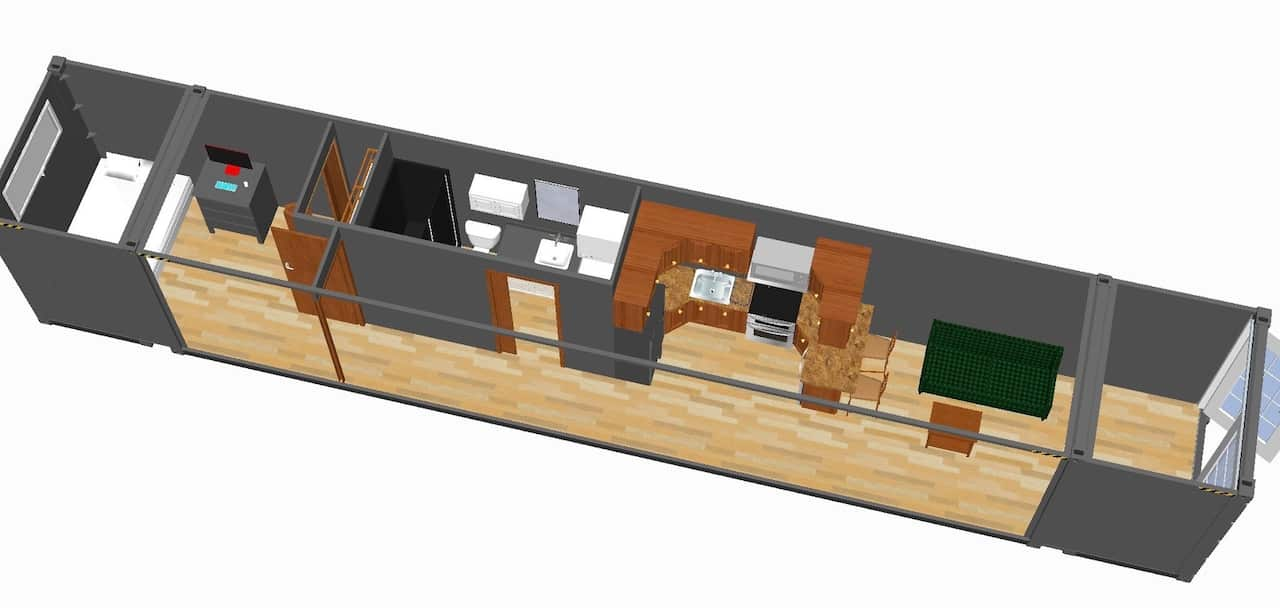Housing affordability issues in Australia have resulted in people looking for alternative ways to build accommodation more cheaply. A recent worldwide trend has been to convert shipping containers to liveable accommodation. However, some real challenges lie behind the rosy picture of turning shipping containers into homes.
From the perspective of recycling and environmental sustainability, it is a very good initiative. Many containers are on a one-way journey, mostly originating from China (the world’s manufacturing house), to the developed nations. These containers are used just once for shipping and then end up being used – if at all – as storage or portable office spaces.
Many companies are now offering to build container homes. One can find a great variety of interesting floor plans to turn containers into housing. But the reality isn’t always as straightforward as these plans suggest. What are the main challenges to consider?
Container quality and engineering sign-off
Online videos and photos emphasise the benefits of recycling containers to build accommodation. However, a number of conditions must be met to ensure the house is structurally sound.
First, if the design requires cutting through the walls to put in windows or doors, it affects the structural integrity of the container. A structural engineer will be needed to develop an engineering drawing to ensure the house will be structurally sound. There is a cost associated with this activity, as with any other type of construction such as steel-frame housing, timber-frame housing or brick-and-tile housing.
You have to work within the dimensions of a shipping container, or add to the build cost by cutting and restructuring the metal cargo box. Wikipedia
Further, many engineers are wary of signing off on used shipping containers, because it is more difficult to assess the structural state of these. They most often recommend using a brand-new container. This is another added cost, as the price of 12-metre cube containers starts from A$5,000, whereas a used container may cost $1,800.
Health and safety
Health and safety concerns arise when it cannot be ascertained what was shipped using a second-hand container.
If human carcinogenic elements or harsh chemicals (which may have left invisible traces) were shipped in a container, one would not want to use that container to live in.
Ensuring this is not the case adds to the challenges of using a second-hand container. This is because tracing the cargos and journeys end-to-end across the full container lifecycle can be very difficult.

You have to work within the dimensions of a shipping container, or add to the build cost by cutting and restructuring the metal cargo box. Source: Wikipedia
Usable space
Housing built from shipping containers is limited by their dimensions. They are roughly 2.35m wide internally and commonly come in two lengths: 6m or 12m.
One also needs to take into account internal stud work to put in drywalls, which can further reduce the width. A 2.35m width is already quite small for any room other than a shower or a bathroom.
To give an idea of how small, a king-sized bed is 1.83m wide. So there will very limited room to put bed side tables or dressing table.
If two containers are cut to create a 4.7m wide room, the space becomes too big for many purposes. If you need a smaller (or more common) width, you need to build a stud wall. That is another added cost.
Hence, the options for customising the container home are very limited if it is to remain affordable.
Insulation and comfort
Insulation is a very critical element of a comfortable lifestyle. The Building Code of Australia as well as the local shire or council are very conscious of insulation standards.
The shipping container is a basically a large steel box. Physics says steel will get hot in summer and cold in winter. To counter these natural effects, the container has to be very well insulated.
Now, the question is where to insulate: on the exterior, or the interior, or both?
Exterior insulation will be better because this will prevent the heat or cold reaching the metal and keep the internal environment comfortable. But putting external insulation on a container means having a stud wall frame or similar arrangement to hold the insulation in place, so that’s an additional building cost.
Ceramic paint insulation is another option and it does offer some degree of insulation. Note, though, that most “before and after” studies have taken a dark-coloured container (such as red, green or blue) and shown the benefit when painting it with a white ceramic paint. The reduction in temperature is partly due to using white paint.
Container housing may be a viable alternative accommodation option. But it can be hard to know whether it will be significantly cheaper than any other ways of building a home without doing considerable research into what the housing requirements and design will involve.
Share
Dateline is an award-winning Australian, international documentary series airing for over 40 years. Each week Dateline scours the globe to bring you a world of daring stories. Read more about Dateline


